The Champion Community: Issue 64
This issue:
- 2018 Australasian Viral Hepatitis Conference wrap up
- Yarnin’ hep C resource for Aboriginal people recognised
- Great news! Maviret listed
- Hep B day at UNSW a huge success
- Nominations are open for Hepatitis NSW’s Annual Cheryl Burman Award
- Hep B screening and health promotion for Aboriginal communities in Western NSW
- Split-second moment that changed the next 35 years of my life

2018 Australasian Viral Hepatitis Conference wrap up
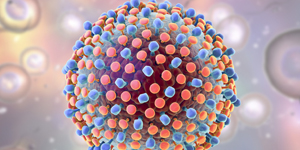
The 2018 Australasian Viral Hepatitis Conference was held in chilly Adelaide earlier this month, and the hot topic of conversation among delegates was making sure not one single person living with hepatitis B and/or hepatitis C is left behind as we work towards elimination.
There were many papers delivered on a variety of issues across two and a half days, with a good mix of community and clinical sessions. The program helped highlight that a lot of inspirational work is being done by some very dedicated and innovative people.
Hepatitis NSW had a number of staff in attendance, with Kyle Leadbeatter, Win Yee Tan and Grace Crowley giving oral presentations on their respective projects and Mina Kim with a poster presentation.
Overall it was an optimistic, innovative and participatory conference which highlighted that not only is real progress being made in addressing the hep C epidemic, but that hepatitis B is an awakening goliath. In Australia we now have a greater number of people with hep B compared to hep C due uptake of hep C cures. For hep B, health promotion programs linked with clinical services to provide screening opportunities are greatly needed for high priority populations – Aboriginal and Torres Strait Islander peoples, and people from culturally and linguistically diverse backgrounds – to ensure they receive effective health care management. For example, Training Aboriginal health workers to conduct fibroscans in Queensland was one practical and innovative project discussed.
Substantial initial progress has been made, in Australia, to lay down a foundation of work to help support people living with hep B into testing and liver health monitoring but, as was pointed out in relation to hep C, it takes years for community relationships to be developed and maintained and for trust to be built with people living with hepatitis. We absolutely must continue the funding that Hepatitis Australia was able allocate to state and territory hepatitis organisations to reach communities of people living with hepatitis B.
There were positive speakers in all plenary sessions, speaking to their lived experience of hep B, hep C, stigma, alienation, treatment, cure and hope. They made powerful contributions to the conference and to the work of all people working in the viral hepatitis sector.
The conference provided superb networking opportunities with the sharing of good and practical ideas. We look forward very much to discussing further, and translating the research findings and project successes presented at the conference into practice in our ongoing work at Hepatitis NSW.
And we look forward to Sydney hosting the 2019 Australasian Viral Hepatitis Conference – AVHEC 2019 – on 5-6 August.
Yarnin’ hep C resource for Aboriginal people recognised
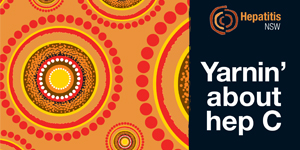
Amidst all the good feeling and positivity of the recent World Hepatitis Awareness Day, Hepatitis NSW was honoured to receive recognition of one of our resources.
On 27 July, the Centre for Social Research and Health (CSRH) at the University of NSW announced the winner of their inaugural National Competition for Excellence in Hepatitis C Health Promotion. First place went to the Cairns Hepatitis Action Team (CHAT) website. Congratulations to the CHAT team for developing a great project!
The judges decided that the quality of entries was so high, they would add an additional ‘Honourable Mention’ prize to the competition. This $1,000 prize was awarded to Hepatitis NSW for our Aboriginal resource, Yarnin’ about hep C. To check it out online >>>CLICK HERE
We are so thrilled to have this resource acknowledged, it truly was a team effort. Many thanks go to:
- Jasmine Sarin, artist
- Kerry Walker, content advice
- Estelle Wade, focus testing at Port Macquarie
- Kerri-Anne Smith, focus testing at Mt Druitt NSP
- Anna McNulty, clinical sign off
- Marianne Byrne, Michael Levy & Tony Butler, prisons-related content advice
Great news! Maviret listed
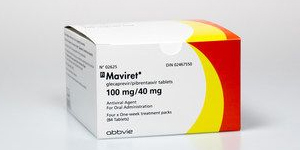
On August 1, the Australian Health Minister announced the listing of new direct-acting antiviral hepatitis C Maviret on the Pharmaceutical Benefits Scheme (PBS). In his media release the Minister said, “In excess of 170,000 Australians, who face the many challenges and risks of living with the hepatitis C, are expected to benefit from the listing of Maviret on the PBS.”
Maviret, manufactured by Abbvie, is a pangenotypic DAA that works by stopping the hep C virus from multiplying and infecting new cells. One huge benefit of Maviret is that it shortens treatment duration for most people down to only 8 weeks, and cure rates are higher than 95%.
CURES FOR HEPATITIS C: treatment update sheet is a simple, single A4 sheet produced by Hepatitis NSW that provides detailed current information about hep C treatment.
Hep B Day at UNSW a huge success
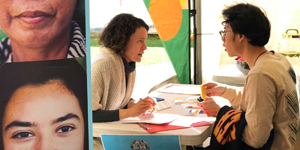
This year for Hepatitis Awareness Week, Hepatitis NSW partnered with South Eastern Sydney Local Health District and the University of NSW (UNSW) to hold an on-campus hepatitis B awareness event for university students – and what a busy day it was!
Attracted by the prospect of free hepatitis B tests and Fibroscans, a snaking queue of university students began to build around the event marquee even before setup was complete. Remarkably, the queue never really subsided throughout the day, only increasing in popularity between classes and at lunchtime.
Whilst waiting in line, the students completed hep B quizzes, and took turns at spinning the Hep B Wheel of Knowledge. They also had the opportunity to speak with specially-trained volunteers.
By the end of the day, the two tireless nurses had tested 80 students for hep B, on top of conducting 41 fibroscans! It was a great result, and certainly a memorable day. Congratulations to all involved, and we’ll see you at the next Hepatitis Awareness Week, UNSW!
Nominations are open for Hepatitis NSW’s Annual Cheryl Burman Award
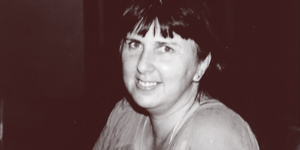
Hepatitis NSW’s Cheryl Burman Award is an annual award that will be presented at our Annual General Meeting and Audrey Lamb Community Forum on Thursday 29 November. It is awarded to a person, group of people or to a project where outstanding work has been carried out to work towards elimination of viral hepatitis in NSW. This work could be in the advancement of treatment, support, information provision, prevention or management for people living with viral hepatitis.
The award pays tribute to Cheryl Burman (pictured), who provided exceptional leadership in the early days of the NSW viral hepatitis response. Cheryl served on the Board of the Hepatitis C Council of NSW from 1993 to 2000, and as our President from 1995 to 1999. Cheryl made significant contributions to the governance and leadership of Hepatitis NSW.
If you know a person or a group of people who have done outstanding work in NSW in the fight against viral hepatitis, then please consider nominating them.
For information about eligibility or to make a nomination >>>CLICK HERE
If you have any questions contact:
Cristina Cezar
phone: 02 9332 1853
email: [email protected]
Nominations close 5pm Monday 24 September 2018.
Hep B screening and health promotion for Aboriginal communities in Western NSW
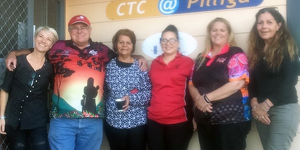
Hep B grants were made available by Hepatitis NSW for Aboriginal Community Controlled Health Services in NSW to help them deliver hepatitis B health promotion activities to their local Aboriginal communities. We were delighted to award one of those grants to The Bila Muuji Aboriginal Corporation Health Services Inc.
On behalf of Bila Muuji, the Walgett Aboriginal Medical Service (WAMS) organised events to be delivered in Walgett town, Pilliga village and Gingie Mission. Activities were delivered in collaboration with staff from Hepatitis NSW, Dubbo Sexual Health (Aboriginal Health Practitioner) and the WAMS.
Over three days, more than 50 Aboriginal community members participated in hepatitis B screening and health promotion. Cultural safety was assured with the support of local Elders and Aboriginal staff.
The project supported community engagement through catered events, incentives of a $30 voucher for a nurse consult, some transport was offered and a further $30 voucher for participants when returning for screening results.
Many of the multidisciplinary team drove well over 800 km through drought affected country, racing kangaroos, emus and the blinding setting sun to deliver these events safely in strong partnership with local Aboriginal community. The local support from both Aboriginal community and staff alike was wonderful and testament to the success of the project.
The Hepatitis B Community Education Projects were administered by Hepatitis Australia and funded from the Australian Government, Department of Health, under the Blood Borne Viruses and Sexually Transmissible Infections Prevention Program.
Split-second moment that changed the next 35 years of my life

Warren Fahey, the Hepatitis NSW President, wrote this article about his lived experience with hep C which was originally published in the Sydney Morning Herald for World Hepatitis Day.
At the age of 29 in 1979, my “Plan A” was to grow old gracefully and maintain a very high level of fitness. When a car overtook a semi-trailer and hit me head-on while I was riding my motorcycle, my plan was left in disarray.
Over the next 18 months, I had many major life-saving operations, some needing multiple blood transfusions. It was only in 1988 that the Red Cross called and asked me to come in. I had blood tests, received counselling and was later told that I had hepatitis C.
My “Plan B” lasted the next 35 years: I managed my hep C by buying some time, eating a balanced diet, exercising and avoiding alcohol as far as possible. Buying time, I hoped, would enable the medical scientists to produce treatments that would eliminate the hep C virus from my body.
After two unsuccessful rounds of interferon-based treatments with terrible side-effects, I put my “Plan C” into action. I joined a clinical trial using a combination of new drugs known as direct-acting antiviral, or DAA, treatments. The result? I was cured of hep C.
Many people with hep C are from marginalised backgrounds and communities. Stigma and discrimination is rife. Hep C is associated with drug use, and that most stigmatised behaviour of all, injecting drug use. Eighty per cent of the 200,000 people in Australia with hep C got it through sharing equipment used to inject drugs. But it is also transmitted through unsterile tattooing and through unsterile medical procedures, often overseas. Hep C causes liver damage and can result in very serious liver disease, including liver cancer. There were more than 600 deaths from HCV-related liver disease in Australia in 2016.
Discrimination prevents people from seeking healthcare. The stigma brings up shame, embarrassment and feelings of lack of self-worth, even for people who injected years ago but no longer do, and also for people who currently inject.
But these new DAA treatments, fully funded by the government, are now readily available via GPs and there are no restrictions based on current or past drug use or on the extent of liver disease. The treatment consists of daily tablets taken for either eight or 12 weeks, with few side-effects. They cure 95 per cent of people of their hep C.
Yet the number of people seeking treatment has dropped dramatically this year. In the first 18 months or so that the treatment was listed on the PBS, 26 per cent of people in NSW with hep C sought and received treatment. But the number of people starting treatment has fallen from 3,400 a month across Australia to only 1,300 a month. It is estimated that more than 170,000 people across Australia are still living with the virus.
This drop in treatment numbers needs to be urgently addressed to prevent more people with hepatitis C from progressing to serious liver disease. If we are to eliminate hep C in Australia by the target year 2030, we need to take urgent action to identify the remaining people with hep C and mobilise all people with hepatitis C into treatment and cure.
If you have ever shared equipment to inject drugs, had prison, backyard or other unsterile tattoos, had unsterile medical procedures or had blood transfusions in Australia before February 1990, then see your doctor and have a blood test. And if you know you have hep C, get treatment as soon as possible. Jump straight to Plan C, and get cured.








